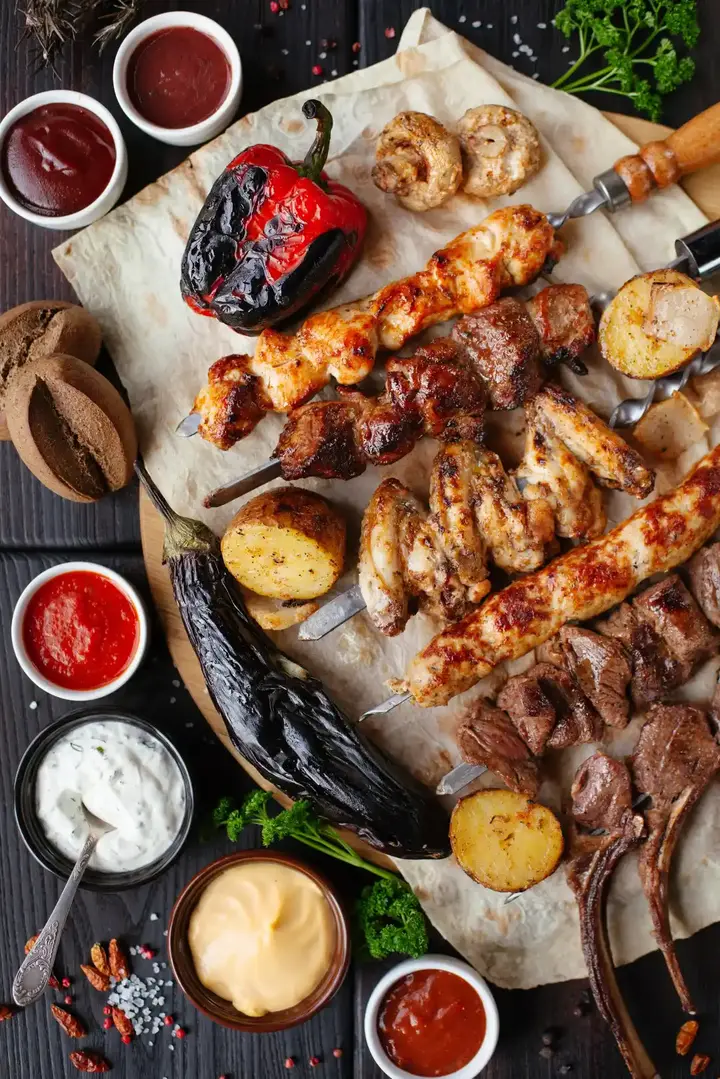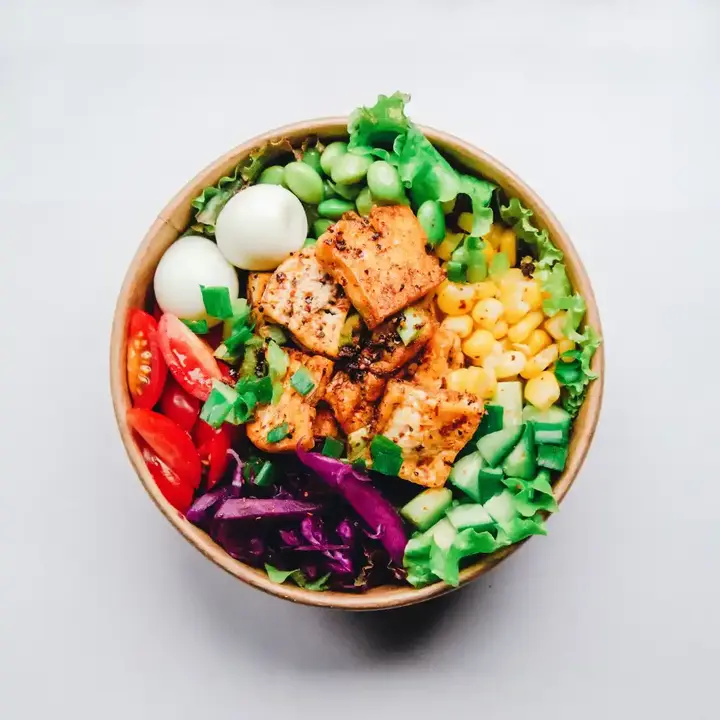Tastes of the World: A Journey into the World's Most Famous Dishes
In a world where cultures are intertwined and civilizations cross-pollinate, world dishes emerge as ambassadors of tastes, conveying peoples' stories and history through every bite. They are not just meals to satisfy hunger, but gastronomic experiences that reduce the world to flavors and colors. From Japanese sushi to Spanish paella, from Moroccan couscous to African fufu, every dish tells a story, and every taste opens a door to culture.
Show key points
- World cuisines serve as cultural ambassadors, conveying the stories, traditions, and histories of the people who create them.
- Asian dishes, ranging from the minimalist elegance of Japanese sushi to the spicy richness of Indian curry, reflect the continent’s diversity and depth.
- Middle Eastern cuisine beautifully balances sweet and savory elements, offering dishes like kebabs, maqluba, and hummus that showcase its rich culinary heritage.
- ADVERTISEMENT
- European culinary traditions vary widely, from the fresh Mediterranean flavors of paella and Greek salad to the hearty Eastern European stews and dumplings.
- Latin American food uses staple ingredients like corn, beans, and chili peppers in iconic dishes such as tacos, feijoada, and ceviche, emphasizing its vibrant fusion of cultures.
- African cuisine is deeply rooted in local ingredients and techniques, with North African couscous and tagine, and Sub-Saharan dishes like fufu and injira capturing regional uniqueness.
- In Oceania, cooking traditions include underground cooking in New Zealand and seafood-based dishes in the Pacific Islands, all reflecting the region’s close connection to nature.
In this article, we take you on a unique journey through the most famous international dishes, to discover together how these dishes form an integral part of the cultural identity of peoples, and how international dishes reflect human diversity at its best.
Recommend
Asia - the land of diversity

East Asian dishes: a combination of simplicity and complexity
In East Asia, food stands out as an art that combines simplicity and complexity. Japanese sushi, for example, reflects precision and attention to detail, with fresh fish served in the simplest and most creative way. In China, we can taste dim sum, a variety of small dishes served with tea. And don't forget Korean kimchi, a spicy pickle served with almost every meal.
South Asia: strong spices and flavors
South Asia is known for its love of spices and strong flavors. Indian curry, with its endless variety, offers a mix of flavors ranging from spicy, sweet and sour. Biryani, whether from India or Pakistan, is a complete meal that combines rice with meat and a rich array of spices. In Sri Lanka, hooppers, a type of coconut pancake, is a popular breakfast dish.
Middle Eastern: sweet and salty in harmony
Middle Eastern cuisine is characterized by its balance between sweet and savory. Kebabs, whether Turkish or Iranian, are served with rice or bread and flavored with herbs and spices. Maqluba, a Palestinian dish that combines rice with meat and vegetables, is turned upside down before serving. We can't ignore hummus and falafel, snacks served throughout the region.
Europe - Tradition and innovation

Mediterranean cuisine: olives, herbs and sea
Mediterranean cuisine reflects a healthy and balanced lifestyle. Greek salad, with ripe tomatoes, cucumbers, olives, and feta cheese, is the epitome of simplicity and flavor. Spanish paella, with its rich blend of seafood and rice, showcases the region's marine diversity. And we can't forget Italian pizza and pasta, which are a symbol of Italian cuisine around the world.
Eastern Europe: warm winter dishes
In Eastern Europe, dishes are nutritious and provide warmth in cold climates. Russian borscht, a rich beet soup, served hot with sour cream. Goulach, Hungary's famous dish, combines meat and spices in a thick soup. In Poland, pierogies, stuffed pancakes, are a popular meal served with a variety of meat, cheese, or fruit fillings.
Western Europe: cheese, wine, pastries
Western Europe is known for its appreciation for quality and good taste. French cheese, of many kinds, is served as an essential part of meals or as a dessert. Belgian waffles, with rich chocolate, are the perfect dessert. In Germany, pretzel, along with local beer, is part of the cultural tradition.
Americas - New and Old

Latin America: corn, beans, chili peppers
Latin America is full of dishes that reflect its rich history and cultural diversity. The famous dish "Taco" from Mexico, served in various forms, stuffed with meat, beans and avocado. "Feijoada", a traditional Brazilian dish, combines black beans with assorted pieces of meat. In Peru, cevichy, raw fish marinated with lemon juice and chili, is a national dish.
Latin America: corn, beans, chili peppers
Latin America is full of dishes that reflect its rich history and cultural diversity. The famous dish "Taco" from Mexico, served in various forms, stuffed with meat, beans and avocado. "Feijoada", a traditional Brazilian dish, combines black beans with assorted pieces of meat. In Peru, cevichy, raw fish marinated with lemon juice and chili, is a national dish.
Africa - virgin land

North Africa: Couscous and Tagine
North Africa is known for its dishes that combine Arabic and Amazigh flavors. Couscous, the iconic dish, served with vegetables and meat, is prepared on special occasions. Moroccan tagine, named after the clay pot in which it is cooked, combines meat and dried fruits to create a mixture of sweet and savory flavors.
Sub-Saharan : Yam and Fufu
Sub-Saharan Africa offers a variety of dishes based on local ingredients. Yam, a type of tuber, is used in many dishes such as fufu, a dough served with rich sauces. Injira, Ethiopian thin bread, is used as a dining tool and to convey different flavors from dishes such as al-wat, a type of soup.
Oceania - Carrot Flavors

Australia and New Zealand: meat and seafood
In Australia, barbecue is an integral part of culture, serving grilled meat in a variety of flavors. "Lamington", a chocolate and coconut-covered sponge cake, is a traditional dessert. In New Zealand, hangi, food cooked underground on hot stones, is a distinctive tradition. Pavlova, a dessert made with meringue, cream and fruit, is one of the national dishes.
Pacific islands: tropical fruits and fish
Pacific islands are famous for their simple and fresh dishes. Bucky, a dish of raw marinated fish, is popular in Hawaii. In Fiji, kokoda, a fish marinated with lemon juice and coconut, is a traditional dish. Albo, food cooked in banana leaves, is served on many islands as a traditional method of cooking.

At the end of our gastronomic journey around the world, we find ourselves in front of a multi-coloured and multi-flavored mosaic. The international dishes we explored are not just a way to satisfy hunger, they are bridges between cultures and expressions of identities. Each dish carries with it the story of a people, and each flavor tells us the secrets of history and geography.
Cooking is an art, a science and a universal language that unites us all, through which we share joys, exchange experiences and celebrate human diversity. So, let's continue to explore the tastes of the world, with every bite we taste, and with every meal we share, we discover a new part of this wonderful planet we live in.








